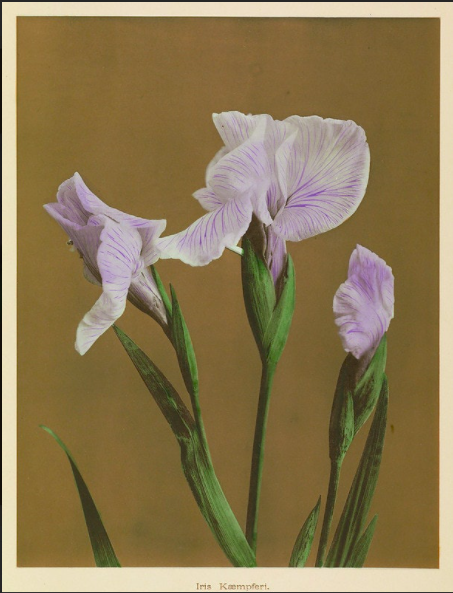While the world is being destroyed by human insanity, lets’ pretend nothing unusual is happening, and let’s talk about art. Botanical art.
This is the second of a series of posts about photographers whose work and life I find inspiring. The spotlight is on Kazumasa Ogawa, a Meiji-era Japanese photographer who photographed, among other things, some Japanese flowers.
The photographer
First, to put this short biography in context, let’s remember that Japan was relatively isolated from the rest of the word until it came into contact with the Portuguese in 1543. After the Perry Expedition in 1853–54, Japan “opened up to the world” and beginning in 1868, the nation entered the Meiji era, a time of great change, influenced by new Aesthetic, scientific, political, and philosophical ideas coming from the West.
In 1882, the son of a samurai and photography enthusIast named Kazumasa Ogawa embarked for the USA to perfect his English and his photography skills. After living in Boston and Philadelphia for two years, where he completed his training, Ogawa returned to Japan and opened a photography studio in Tokyo.
Unlike his contemporarly, obscure British photographer Charles Jones, whom I wrote about on a previous post, Kazumasa Ogawa became a distinguished photographer in his lifetime. He received government commissions to document Japan’s historic sites and treasures, and was the editor and publisher of two photography magazines, besides becoming a founding member of the Nihon Shashinkai (Japan Photographic Society).
The book about the photographer
Between 1994 and 1996, Kazumasa Ogawa produced a series of books entitled ”Some Japanese Flowers”. In 1984, the Getty Museum acquired one of those books and published a volume with the same name. The volume, “conceived and developed” by Stacy Miyagawa, includes a short introduction about the life of Ogawa, and features 38 plates with hand-painted collotypes of some of Japan’s native flowers. Ogawa’s photographs are in the public domain, and there is a short article about the photographer on the Public Domain Review, an online publication “dedicated to the exploration of curious and compelling works from the history of art, literature, and ideas”.
The images
Each flower is portrayed against a neutral background and resembles something between a watercolor image and an aged color photograph. They are full with details and some seem to have a texture as well. What I like the most in these pictures is their simplicity and detail.

Some portray flowers already in the process of wiling, and the arrangement of the bouquets seem very natural, without much emphasis on arranging the flowers.

It is pretty clear that Kazumasa Ogawa was using photography to document the flora of his country. His images are realistic and faithful to the anatomy of the plants. Considering that most classical botanical illustration and photography have been produced in monochrome, to offset the expenses with color, it is interesting that the plates in the book “Some flowers of Japan” were hand painted.
Reference:
Some Japanese Flowers: Photographs by Kazumasa Ogawa. 52 pages, 38 plates, Getty Publications. 2013. The book can be purchased here.
A word about the featured photograph
The featured photograph is a still life taken by me. Whenever you are in the mood to give your photos a painterly look but don’t want to waste too much time on it, Topaz Studio is your friend. The software is free of charge, and is available both for Windows and Apple. If you are a Photoshop user, after installing Topaz Studio, you can access it in Photoshop through the filters menu. The app comes with a number of presets, over which you have some limited control. I usually apply the preset on a separate layer, then play with the layer’s opacity for the final look.
______________________________
Wall Art landscapes and miscellaneous
________________________________

Leave a comment